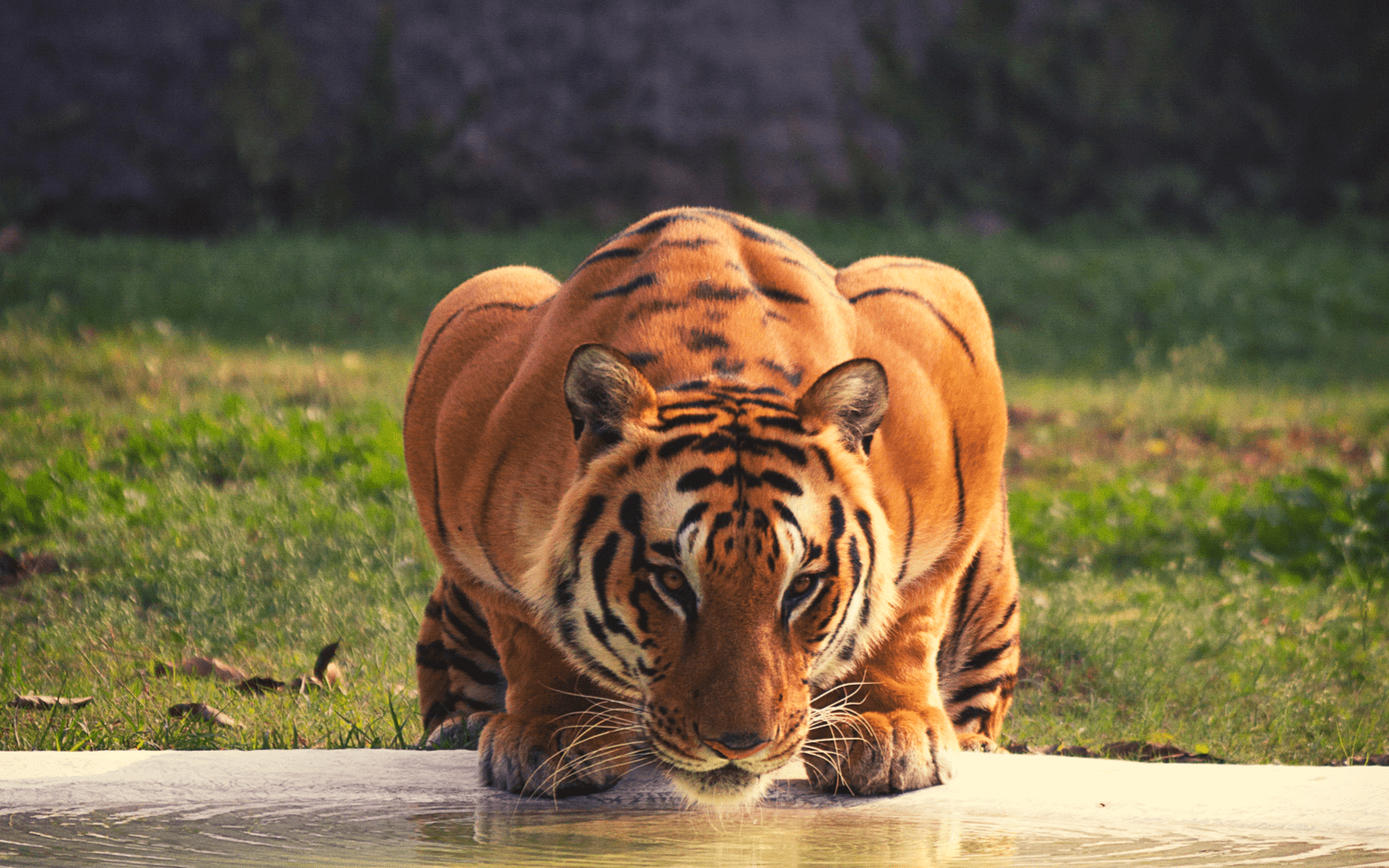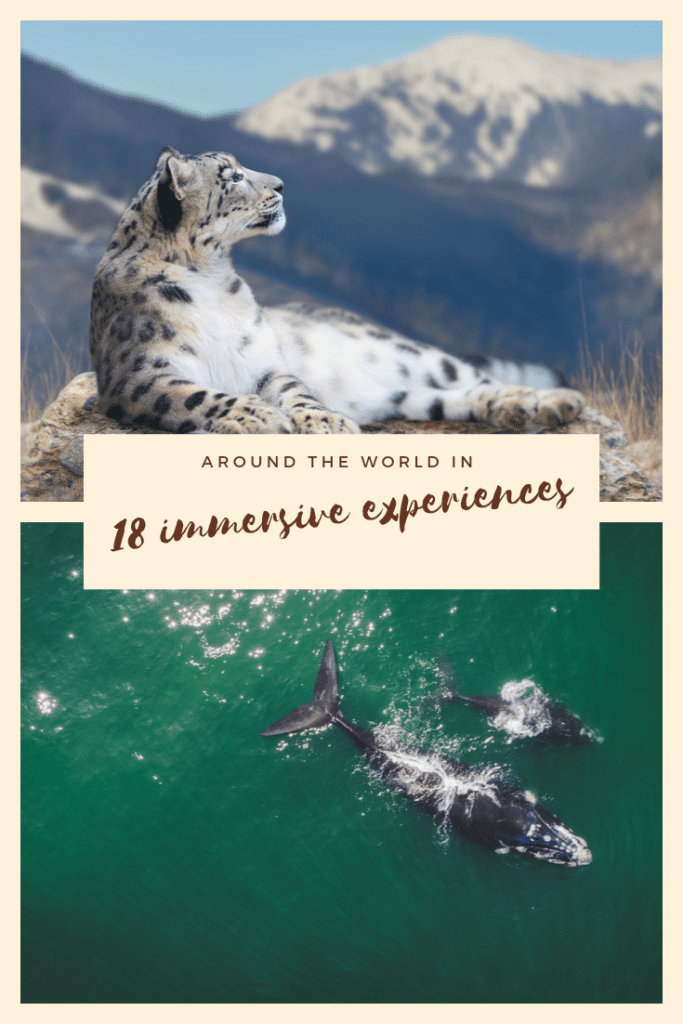A wildlife safari tour remains one of the earth’s classic adventures for thinking travelers.
Our astonishing planet is home to a gripping collection of rare and stunning creatures, climactic panoramas, and, increasingly, immersive experiences.
The Question:
But what is immersive and why should you insist on an immersive safari animal experience?
Money can buy you an opulent safari, but it takes an in-depth knowledge of a destination to guarantee an eye-to-eye audience with wildlife royalty.
A superior immersive experience will live up to the hype. It brings excitement and collateral involvement to the moment. It is your opportunity to learn new skills as you engage in the action.
The Answer:
The impact restricted immersive experience is what you add to the solid gold bucket list.
We scour the globe for the very best of these extraordinary safari animal adventures, they are always on our mind when we visit a destination… and as new ones become available, we ensure they live up to both our conservation standards and exceed your wildest expectations.
Why don’t you join us as we explore some of our favorite immersive experiences and travel:
☆
African Penguins
South Africa
Boulders Beach is clean, safe, and protected from wind and large waves. It is rarely crowded… unless you count thousands of African penguins ready for their close-up.
An estimated one and a half million African penguins arrived here in 1910. By the turn of the 20th century, only 10% were left, and they are expected to be extinct in the wild by 2026.
Today the entire population of these little creatures can be found from southern Namibia all the way around the South African coast to Port Elizabeth. A single breeding pair began the Boulders Beach colony in 1983. This spot now offers a viewing opportunity that is both impressive and as immersive as you can swim and kayak with the 3000 inquisitive penguins which roam freely.
The penguin action is hot in summer, and in January, the juvenile birds take to the beach to molt. During September and October, the birds are out at sea feeding, and fewer are spotted on the beach.
The water reaches highs of 70ºF/21ºC in January and gets as cold as 57ºF/14ºC in August.
African penguins were also known as jackass penguins because they sound like donkeys braying.

Alpaca
Peru
Peru boasts 90% of the world’s Alpaca population. Their padded hooves do not erode the soil, and as the animals browse rather than graze on food, their mouths cut the grass instead of pulling it out. This makes them quite economical and practical to feed!
Where alpacas are used to interacting with humans, they quickly learn that the date will involve delicious feasting. This means that they are quite excited to see humans and are rather fun to embark on.
Once you step into the corral, the alpacas will quickly surround you (queue the selfies).
Where there are Alpacas, you will also find traditional weavers. Factory assembly lines and fake dyes are not how the Alpaca industry works. Once you have spent time with Alpacas and their weavers, you will easily spot counterfeit alpaca products.
No alpacas are harmed to use their wool.
It is a perfect experience for both animal and art lovers.

Antipodean Wildlife
Australia
Kangaroo Island
An island with 316 miles (509 km) of coastline, native bushland, wildlife, adventure, pristine beaches, local wines, and sunsets.
Kangaroo Island is a wild animal safari paradise.
You can spy
sea lions basking on white beaches,
koalas enjoying their eucalyptus,
pelicans alighting over the pristine wilderness…
and quokkas!
A quokka is like a cat-sized kangaroo (they come from the same family) and their babies are also called joeys.

Bats!
Zambia
Kasanka
Playing with eight million straw-colored fruit bats may not immediately grab every imagination or appear at the top of your African wildlife safari dream list.
But don’t decide until you have all the facts:
When the world’s largest mammal migration arrives from the Congo to feed on the wild musuku fruits in a tiny patch of evergreen swamp forest inside Zambia’s Kasanka National Park an unforgettable sight combines effortlessly with another spectacular African wildlife secret; the Bengweulu Wetlands offers sightings of the shoebill stork, the wattled crane, sacred ibis, spur-winged goose, and swamp flycatcher, as well as plentiful elephant, buffalo, reedbuck, and massive herds of black lechwe.
There are over 200 species of African Bat and Africa is home to 20% of the world’s bats.
The bat migration takes place for around 90 days between late October, and mid-December in Kasanka National Park’s mushitu swamp Bat Forest.
Big 15
Ecuador
Galapagos
In the Galápagos, the Big 15 wildlife holiday is calling all adventurers in search of a unique wild animal safari. The islands offer adventures for every member of the family and some of the top ethical and immersive wildlife safari tours on earth.
The word Galápagos comes from the Spanish for horse saddle
Here is our Little Guide to the Galápagos and
here 👇🏼 is a guide to seeing the Big 15 in the Galápagos

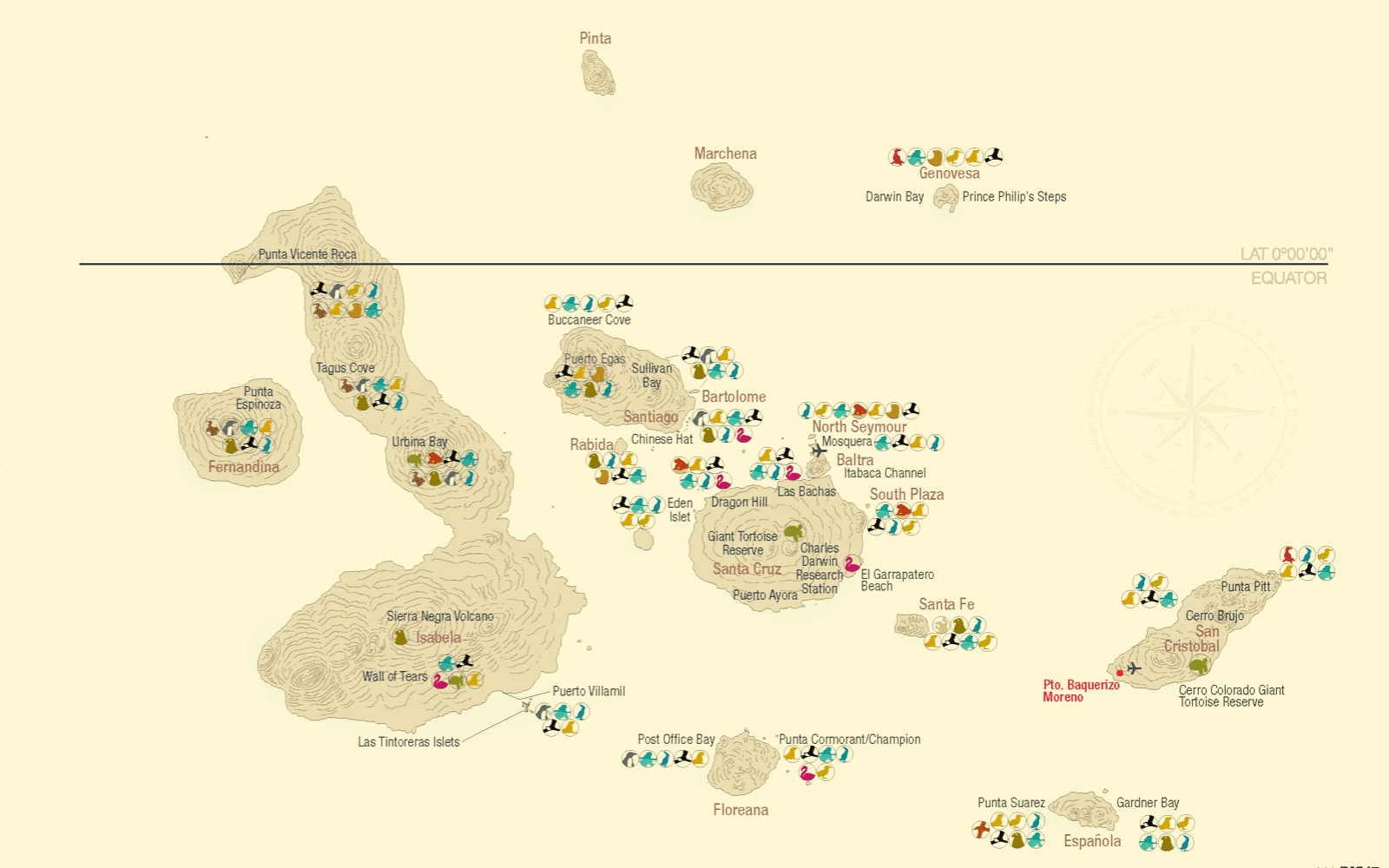
Blue Mountains
Australia
Wolgan One and Only
The Greater Blue Mountains is a World Heritage-listed site, and the intimate Wolgan Valley’s One and Only is where the most discerning travelers stay to immerse themselves in this environment.
The Wolgan River cuts a gorge through the sandstone with steep cliffs and picturesque road. Here, you can immerse yourself in the area through heritage tours and horse riding adventures as well as hands-on Conservation Activity excursions focused on preserving the surrounding wildlife sanctuary.
The ancient rocks under the Blue Mountains are around 470 million years old.
© Wolgan One and Only
Camels
Morocco
Nomadic caravans have crossed the Sahara for centuries, and riding a camel is the iconic desert experience. Donning a cheich (the customary turban veil) and being hoisted onto the back of a camel is your gateway to unique aspects of Moroccan culture where scenic villages dotting the routes with traditional culture and welcoming rural Moroccan locals.
Riding a camel is like finding yourself on the back of a particularly bumpy horse across deserts to palm groves and oases.
How to know your way around the two camel types? Ask them to do a headstand!
The Dromedary camel looks like a D when it does a headstand.
The Bactrian camel looks like a B when it does a headstand
Participate in the traditional Moroccan tea ceremony where the sweet minty tea comes in three servings, The first being gentle as life, the second strong as love, and the third bitter as death.
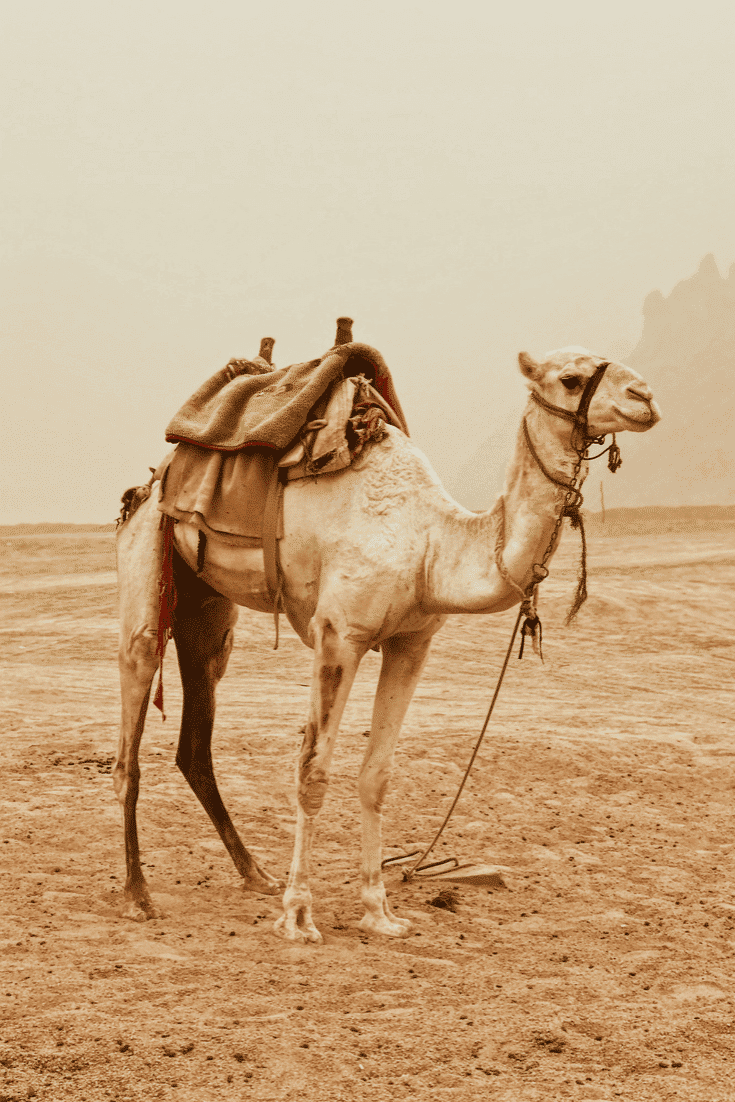
Chimp trekking
Tanzania
Greystoke Mahale
The isolated golden beaches along the shores of Lake Tanganyika, in the shadow of the forested slopes of the Mahale Mountains, are breathtaking. High altitude plains are carpeted with wildflowers after the rain, waterfalls cascade, and butterflies and birds abound.
The result is a complex range of eco-zones and mind-blowing mammalian diversity ranging from giant forest squirrels and scaly giant pangolins to brush-tailed porcupines and grysbok.
This paradise on earth is also within hiking distance of a group of chimpanzees who deign to allow human visitors to their domain. The chimpanzee group moves around freely, and guests may find them almost in camp or a difficult 5-7 hour trek away.
A pretty unique take on the usual African wildlife safari.
Greystoke Mahale is inaccessible by road and can only be reached along the coast of Lake Tanganyika from the airstrip.
Six open-fronted bandas look out across the shore (what better way to enjoy the famously splendid sunsets over Lake Tanganyika… and the lamp-lit flotillas of sardine fishing dhows at night) and the destination is so remote that the only forms of transport are feet and boats.
All visitors support the protection of the habitat for more than 1000 wild chimpanzees and many other of our African safari animals. The Mahale Mountains National Park was created to protect the chimpanzees and other monkey and ape families.
The Mahale chimps have been observed self-medicating by swallowing folded leaves with small spines to remove intestinal parasites, and eating medicinal herbs to counteract infections
© Greystoke Mahale
Elephants
Zimbabwe
Hwange
Home to one of the largest elephant populations in Africa, Hwange is a hotbed of herds that can reach 350 in number. They are called super herds, and this African wildlife safari is unique to the Hwange area.
Water is a crucial problem, and during the dry season, the African safari animals rely on man-made pans of calcium-rich water. And when you arrive amid a super herd at a watering hole, your soul will be forever touched by the experience. The youngsters are a delight to observe, and it is mesmerizing to see the matriarch and mature cows orchestrate the visit through constant communication.
Did you know… Baby elephants stay with mum for up to 10 years. They even learn to eat by putting their trunks inside their mothers’ mouths to take food.
In Hwange, you can also walk with the giants following incredible guides in the literal footsteps of the elephants.
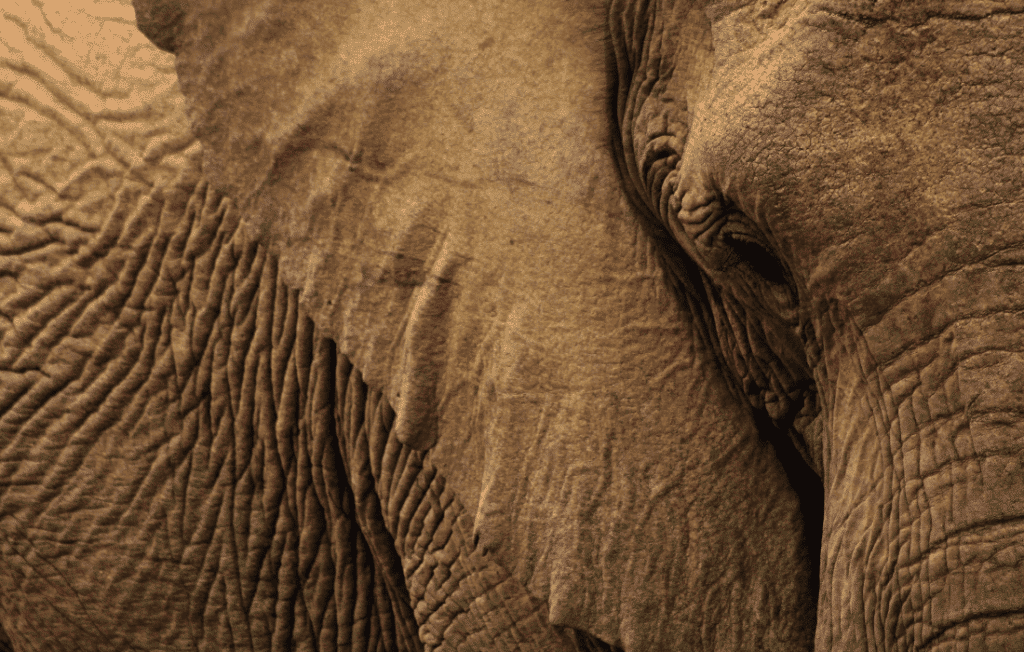
Gorillas
Uganda & Rwanda
It is one of the most exclusive clubs on earth. To belong to it you have to trek through dense African jungle and spend time with the largest primates on earth. Gorilla trekking is the gold standard of unique experiences, and both Uganda and Rwanda have fantastic gorilla trekking programs.
When it comes to Gorillas, nothing is more immersive than the habituation experience. When you go trekking for Gorillas during your African safari holiday, you will only have an hour with them. During a habituation experience, guests spend four hours with them.
But what does Habituation mean?
Gorilla Habituation is the act of training wild gorillas to become used to seeing people. It takes two to three years to complete the habituation of a group of gorillas, and the activity is a relatively new addition presented by the Uganda Wildlife Authority on a small scale.
A maximum of four guests can immerse themselves into the world of these peaceful creatures between December and March; and July to October.
The Gorilla habituation is exclusively available inside Ugandan borders at the Bwindi Impenetrable Forest National Park. There are only two family groups at Nkuringo and Rushaga who are currently available for habituation.
The Marine Big 5
South Africa
Grootbos
Our oceans are the last frontier. Humans know more about the distant cosmos than we understand about what happens in the deep water surrounding our continents.
We do know that the nutrient-rich water from the Atlantic Ocean pushes into the Benguela current to mingle with the Indian Ocean’s Agulhas current to create a magical bloom of marine diversity. The phenomenon is known as ‘The Serengeti of the Sea,’ and here, the Big 5 of the Oceans can be enjoyed by lucky land-dwellers.
More than 100 Southern right whales arrive to mate and calve. Hundreds of bottlenose dolphins prey on large shoals of fish. The Cape fur seals and African penguins populate the islands surrounding the coastline and… the majestic white sharks treat the party as their personal Uber Eats.
From Grootbos, you can observe the Marine Big 5 in luxury through intimate encounters within an aqua wonderland.
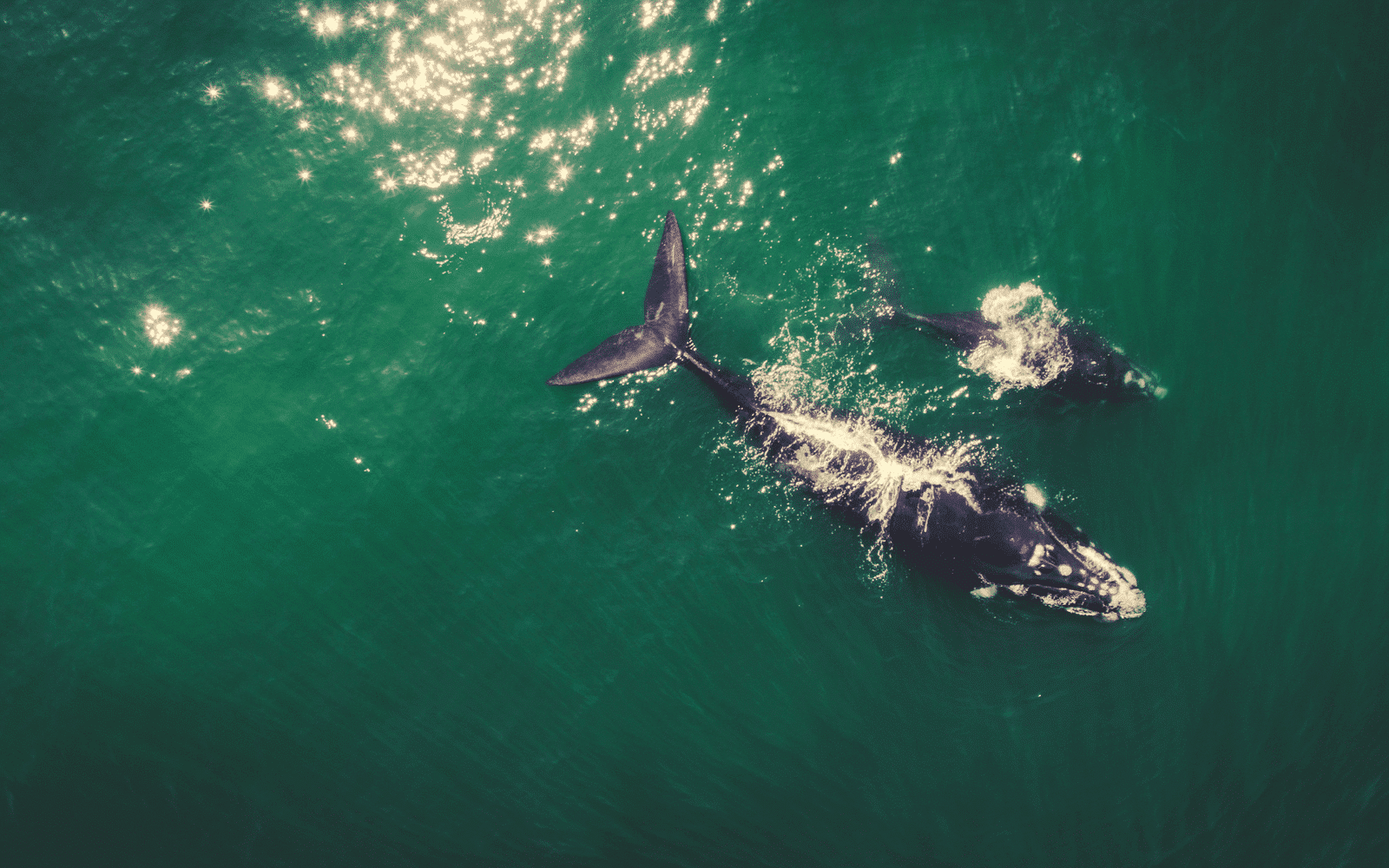
Meerkat
Botswana & South Africa
Jack’s Camp, Tswalu Kalahari
Significant gangs of meerkat thrive in the Kalahari Desert. Up to 40 of these incredibly cute and rather intriguing members of the African safari animal tribe live together in some of the most inhospitable, arid and unforgiving conditions in Africa.
Did you know…. A group of meerkat is called a mob… and every member of the mob has a particular set of duties.
Our favorite meerkat experiences can be found at Tswalu Kalahari and Jack’s Camp in the Makgadikgadi.
Guests often rate meeting meerkats as one of the most rewarding experiences of their African safari holiday. Their antics are captivating, but what sets the experience quite apart is the fact that the meerkats will be happy to come close to their human visitors and will have no qualms using a handy human as a look-out post!
Respectful meerkat meetings take place near the meerkat burrows as they can’t be disturbed while hunting and foraging.
It is possible to spend an hour with these little charmers, and while they can be spotted throughout the year, they are especially good to watch in the dry season between April and October. (When the area is too wet it is more difficult to reach the meerkats.)
Riding Wild
Kenya
Borana Ranch
There is a subtle but rather grand difference between taking a game drive in a vehicle and experiencing the African bush from horseback. And in the wide-open plains of the Borana, the African wildlife safari experience can be both luxurious and exhilarating.
A mobile African safari holiday on horseback for riders of all abilities deliver the Big Five in five-star comfort. There are few experiences in life that are as innately thrilling as interacting with African safari animals from the back of splendid horses.
Did you know… There are no indigenous horses in Africa, south of the Sahara because of two killer diseases: Trypanosomiasis (African sleeping sickness – ASS) and African Horse Sickness (AHS).
The Borana ranch encompasses 35000 acres near Mount Kenya.
Rhino Trekking
South Africa
Kwandwe Private Game Reserve
At Kwandwe, the dawn breaks over 22,000 hectares of wild, sub-tropical scrubland. You can spend half a day tracking rhino with a rhino monitoring specialist. From your safari vehicle, you will learn about the habits of these threatened safari animal species and Kwandwe’s conservation efforts.
As guests assist in the job of keeping track of the rhino population, the lucky ones may find themselves helping to dart and medicate fully grown rhinos (ala Prince Harry and Meghan Markle).
It is a once-in-a-lifetime African safari holiday opportunity to get up close and very personal with the gentle giants of the bush and lend your eyes and hands to halting the significant poaching problem.
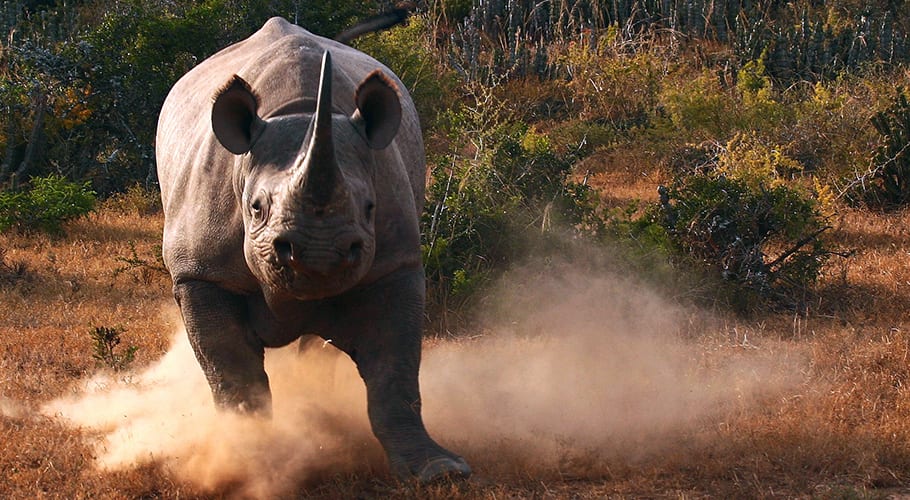
Scuba
Mozambique
Mozambique is world-famous for its megafauna. And we are not talking about your average African wildlife safari here: whale sharks, manta rays and humpback whales are de rigueur in the Mozambique Channel with its warm Agulhas Current.
In the north, the Quirimbas Archipelago is now home to the designated Primeiras and Segundas Marine Protected Area – the largest MPA on the African continent. Protected coral reefs and mangrove forests are an essential nursery for a myriad of reef fish and five of the ocean’s seven marine turtles.
In the south, the Maputo Protection Area provides a haven for nesting marine turtles and offshore reef ecosystems. The whale shark alley, rich in plankton, near Inhambane, almost guarantees whale shark sightings.
Mozambique has sunny days and crisp evenings all year round.
The dry season runs from April to late December.
The summer season goes from late December to March and is hotter with higher humidity and occasional intense but short showers, usually at night.
Daytime temperatures vary from 72-90°F (22-32°C).
Dive Ponta do Ouro
A long reef with small drop-offs and sand patches featuring schools of fish, turtles, and potato bass as well as occasional game fish and dolphins.
At Pinnacles, a deeper reef promises hammerhead and Zambezi shark sightings. Potato bass patrol the reef and rays float bay regularly with game fish always prowling the strong current.
Pemba
The Gap is a world-famous wall dive on a 260-390 foot (80-120 m) drop off from the edge of the continental shelf. The dive features dramatic structures, gorgonian fans, sunfish, and devil rays.
The Edge of Reason, Medjumbe Island is a drop-off that goes straight down to over 2750 feet (850 m) and is named from the sensations that flood you as the wall plummets into the deep blue. Overhangs and caverns harbor humphead wrasse, reef sharks, snappers, and unicorn fish.
Kingfisher Reef, Inhambane – There are many dive sites on this reef off Praia de Jangamo. The reefs offer a huge diversity of marine life, including lots of tropical fish species and numerous giant manta rays visiting cleaning stations.
The Manta Reef, Tofo, does what it says on the tin and is famous for a couple of manta cleaning stations.
Fabulous Mozambique also has beaches, museums, and enjoyable day trips for snorkeling and fishing. Every African tour and safari is waiting to entertain every generation and member of your group.
In the Bazaruto archipelago (a protected area since 1971), you can spy dugongs, dolphins, whales, and turtles.
The water is always warm.
The rainy season runs from November to April.
February and August are windy, which might affect visibility, and between May and September, the visibility is the best.
Snow Leopard
Nepal
Ladack
At an elevation of 13450 feet (4100m), the Hemis National Park in Ladack covers the entire Rumbak Valley. This wildlife holiday may produce not only the incredibly rare white leopards but also Tibetan wolves, blue sheep, horned sheep, Ibex, Tibetan Antelope, Shapo, Marmot, Tibetan Hare, and the Eurasian Brown Bear. Among the avifauna population found are the Snow Patridge, Golden Oriole, Snow Cock, Golden Eagle, Horned Lark, and the Red-Billed Chuff.
The experience is wrapped in the ever-present folklore of the Rumbak Valley, the savage beauty of the Himalayas, and architecturally rich Buddhist monasteries and mud palaces.
The best time for this safari adventure is between November and March.
As one might expect, the Ladakh winter is chilly, and January is the coldest month, but the evenings and night times are still freezing in March.
Temperatures can be expected to be between -13°F to 42°F(–25°C to +6°C) during the day (up to 45°F (+7°C) in March). Night-time temperature can drop to 14°F to -13°F (-10°C to – 25°C). There is usually snow around from January to March.
The average elevation is 9842 feet (3000 m), and Ladakh can be reached only by air between November and March.
Our Nepal specialist Viji tells us how she spotted her very own snow leopard:
For many reasons, going on a trek to Hemis National Park in the winter months is undoubtedly not for the weak of heart or the cold of feet.
As the less fortunate animals on the food chain are forced into the valley to graze on lower pastures during the winter months, the snow leopard makes its way down the trails for a relatively easy hunt.
And here, humans must follow. Hiking in the cold and rugged terrain is an essential requirement if you want to spot one of these majestic creatures. Of course, the snow leopard is so elusive, one can spend a couple of weeks hunting for a site in the cold only to be rewarded by a twitch of the ear that could very well be a hare from such a great distance.
A flight to Leh and a drive will bring us to Hemis National Park. A seasoned mountaineer will not cringe at the idea of carrying a load and hiking the moderately inclined hike for four hours to reach the village of Rumbak. I, on the other hand, was looking for an excuse to ride on a mule and enjoy the journey free of lugging the luggage. This was a wise choice considering a day in Leh was not enough to acclimatize. The camps and lodgings are basic; however, incredible food and hospitality made up for the lack of creature comforts.
Nothing prepares one for the long hours of waiting to catch this cat. Our environment teaches us a lot of things, as an urban dweller, I know I need to move when someone honks, similarly spotting the elusive cat requires one to have trained eyes and ears to catch the swaying tail against the white backdrop. I was fortunate to have a fantastic guide. He offered me a different perspective, he guided me to make this trip, not just about the cat, but also a journey of experiencing the local folklore and the monasteries along the way. Hiking alongside the beautiful cliffs and stunning backdrops, I was gifted with rich insights into some of the other Himalayan wildlife, such as the beautiful Ibex, wolf, blue sheep, Tibetan hare, and amazing migratory birds.
On the very last day, as we packed up to hike down the village, there was still hope that we would spot this cat who the locals lovingly call the grey ghost.
As I was sipping my tea, my guide mounted the telescope on the stand and did a quick survey. He summoned me with hand gestures of some urgency, clearly scared of losing sight of what he has spotted. I could not dare to believe… until I focused my own eyes on the grey ghost walking towards the lens from far away amidst the backdrop of the blue sky and snow, the tail swaying with the joy of finding an Ibex.
Having traveled all around our beautiful earth, I must tell you that nothing prepares you for the moment you first see a snow leopard.
Viji
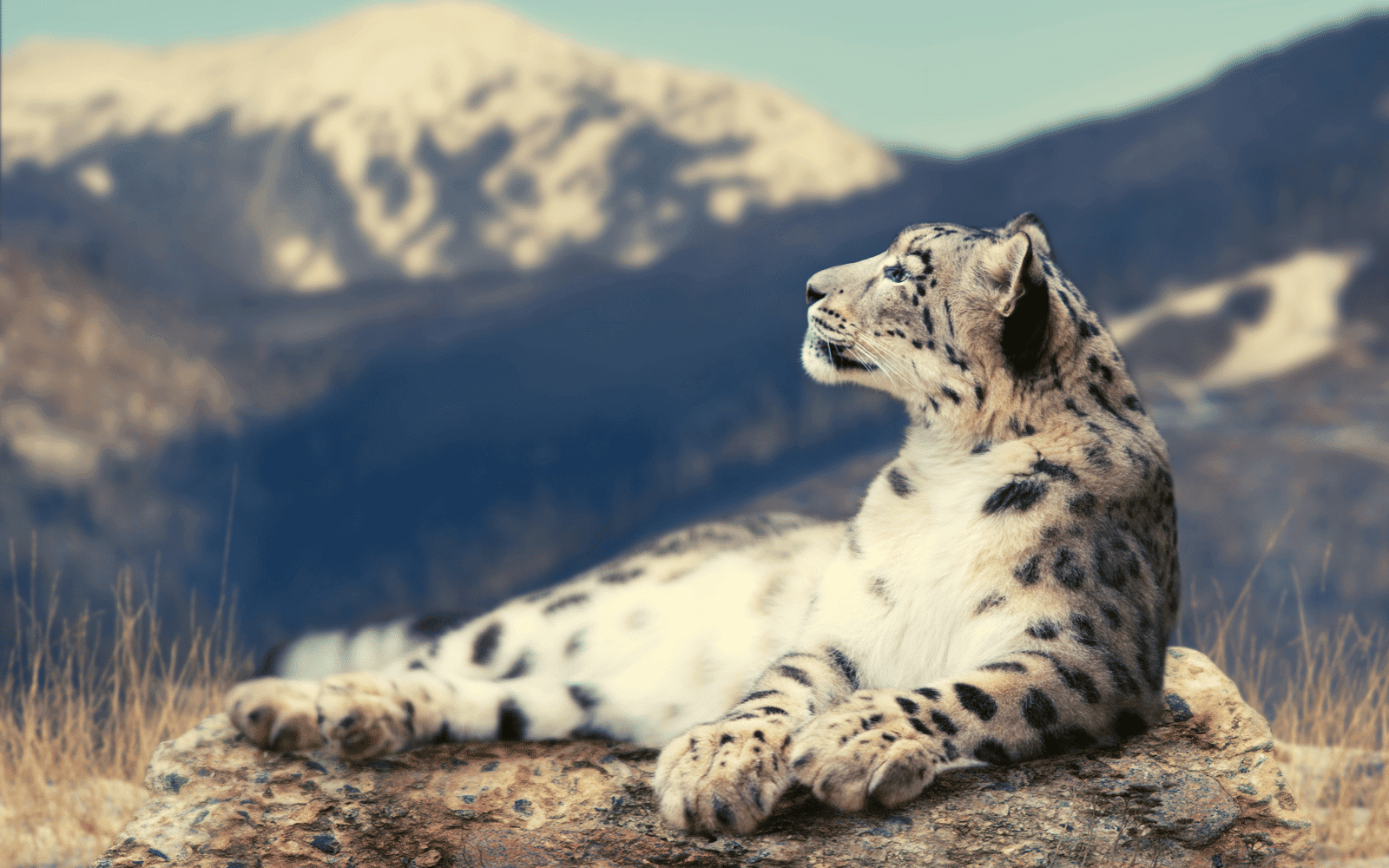
Tigers
India
The parks don’t have obvious fenced boundaries, and I remember once as a kid, I had wandered very close to one of the parks where the fence and the road were so close to each other. Just as the driver picked me up, a tiger crossed the street. Even as a kid, I could sense the power of this majestic animal. Viji
Tigers are wanderers and have no problems trespassing through villages. At night the communities have watchmen taking turns to watch their livestock; a hungry and thirsty tiger is a determined tiger, so invariably, the mornings would be stories of lost and damaged properties and loss of a cow or a goat and in some cases a dead tiger.
The first civilization that included tigers in its culture was the Mohenjo-Daro and Harappa settled in the Indus valley 5000 years ago. In Hinduism, goddess, Durga is depicted riding a tigress in the battle. In Buddhism, it symbolizes anger; the Asian cultures have objects with tigers in the form of amulets, they are considered as protectors of the good and kill the evil. The stories in mythology, the fictional tiger ‘Hobbes’ the Shere Khan in jungle book.
They are trickier than a lion to spot, and the thrill of wildlife holiday success may, therefore, be that much more delicious.
Global tiger numbers have depleted from around 100,000 a century ago to less than 4000 today, though in more recent years they’ve not been doing so poorly – at a low point a decade ago, there were barely 3000 of them.
India is home to 70% of tigers in the world, and almost 50 tiger reserves. The onset of summers in the North and North-East part of India would mean a quick three-day jaunt to one of the many Tiger reserves where the trickling waterfalls or a pool of water are a prime source of water to the wandering tigers looking to quench their thirst. Some reserves offer more chances for spotting a tiger than others and opportunities for a successful tiger safari are better at reserves like Satpura National Park, in the central Madhya Pradesh.
When you find a tiger looking for shade and water it is a sight to behold.
